RESEARCH OF Fortune Teller Is Not Here
神婆唔係度
Installation with Fortune Teller and a self-help booth, 460 (L) x 290 (W) x 200 (H) cm
2018, Hong Kong
Artist Talk memos
Artist Talk memos (2 Mar 2018)
Artist Talk memos
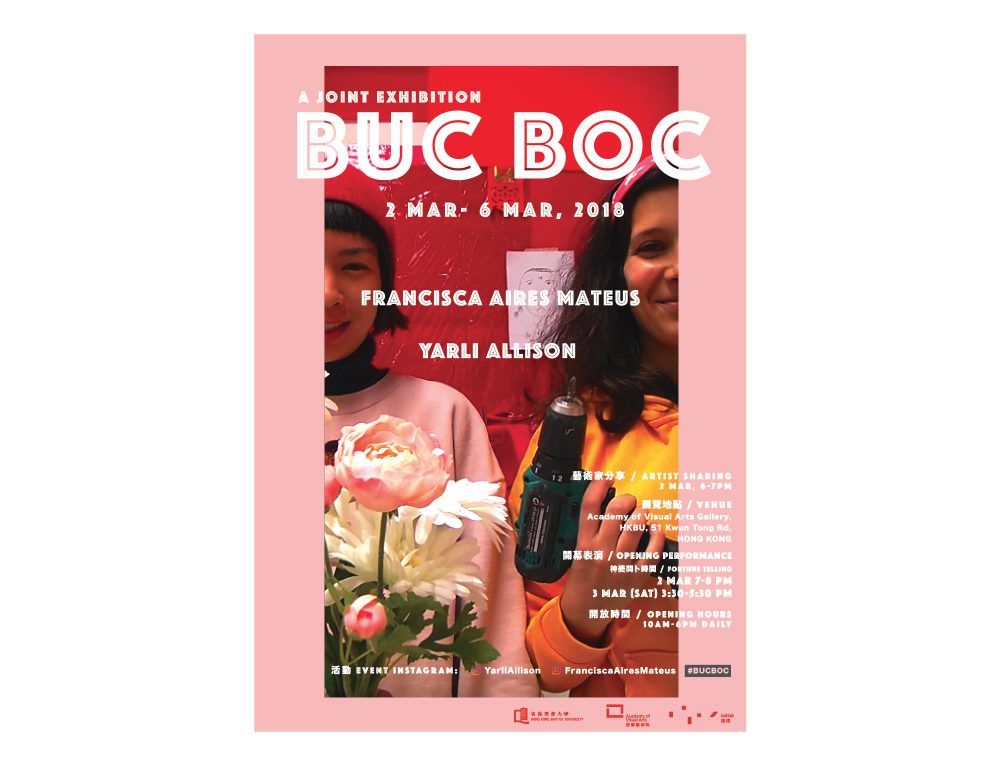
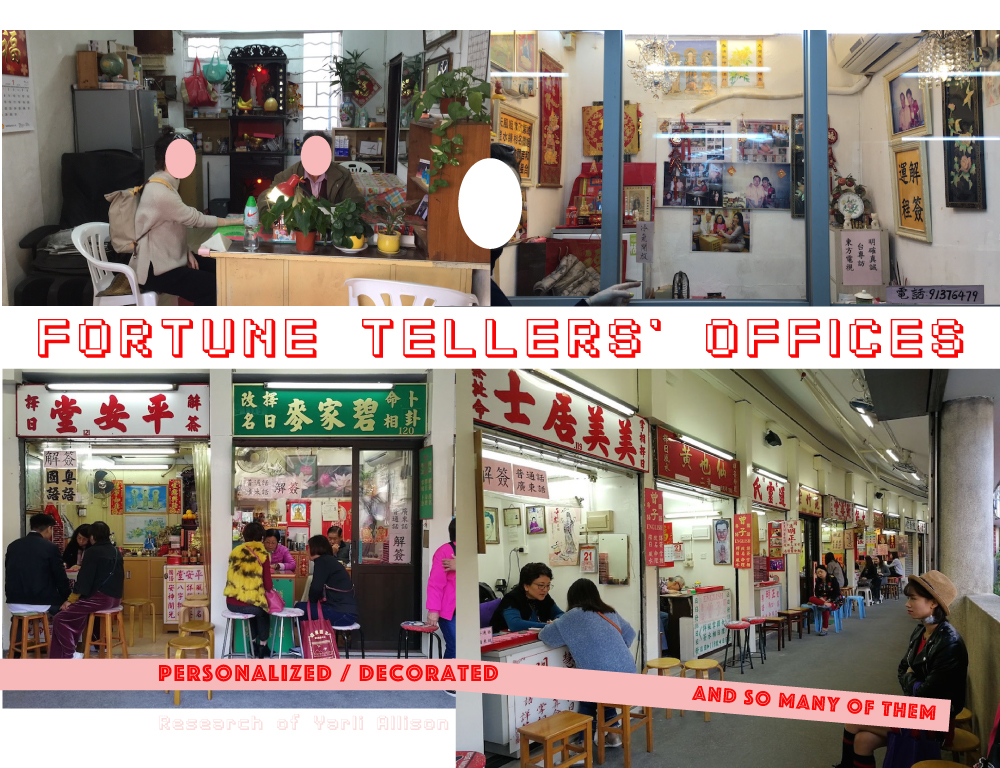
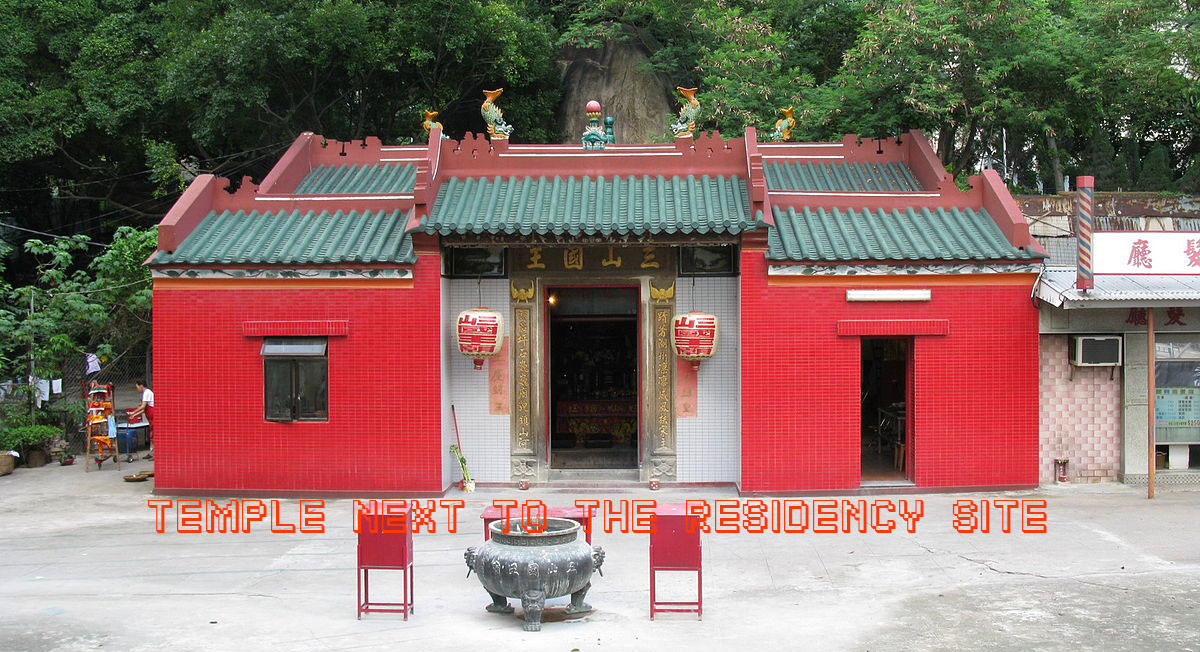
Temples, fortune teller's offices and objects
I enjoy making sense of the nonsense. Therefore, I am fascinated by tools, how things function, not only tools for the physical and emotion but also culturally and socially on how problems are solved.
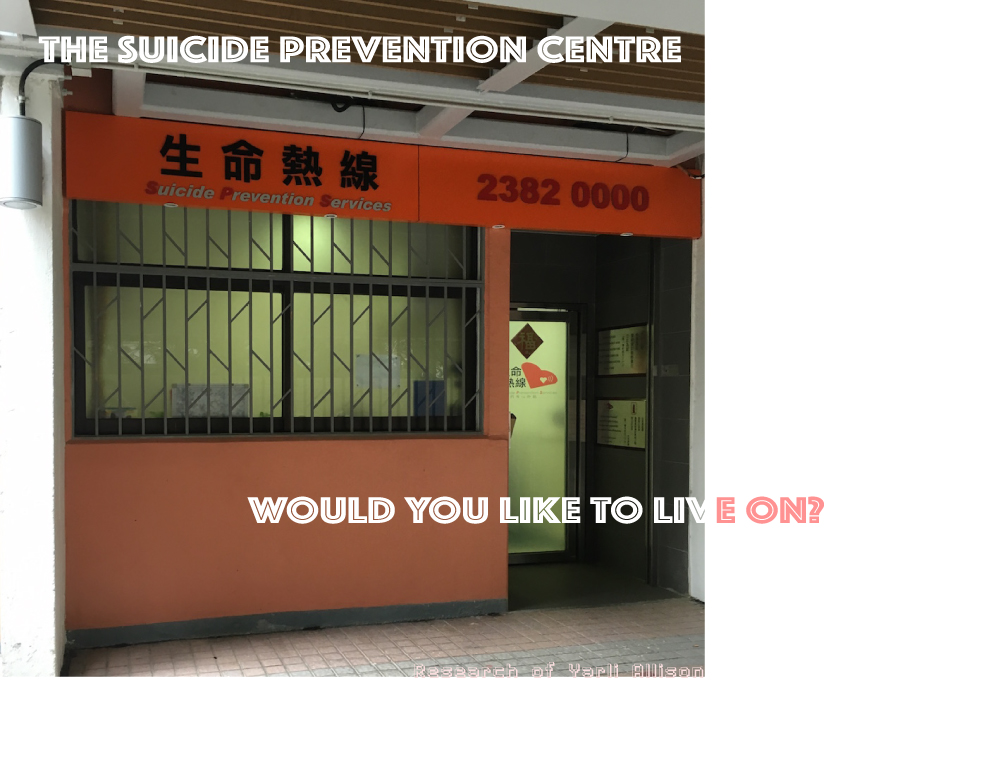
Fear is what needed to be solved during my residency. Hong Kong has a shallow but wounded history of war, and people never forget to talk about its story. Being a studio-based resident of the wartime heritage site - students and alumni came separately to warn me:
do not go to a certain toilet;
do not stay after dusk; the Japanese ghost of onsite bomb shelter;
which staircases and rooms are most haunted...
so by the first week, I already have a collective ghost story 'map' of this site.
These systems of 'belief and avoidance' in the supernatural - heavily shape how people experience daily life, how we navigate space on which route to avoid or what not to act. I walk to the far away toilet just because the closest one is 'spiritually uncomfortable'. It intrigues my investigation on traditional tools to expel ghosts and bad fortune.
When we believe in myths, our belief anchors our behavior. What if we do not believe in these stories - would we still go to those haunted places without an anxious awareness? When our general behavior is affected by thoughts, and emotion grow obsessively, how does one control and make use of fear?
I think we control our feeling of fear by making sense of fear, as any other emotions. In the traditional Chinese culture, many tools selling in 'incense shop' (香燭紙紮店) are invented to maximize luck and drive away sickness.
One such tool is the Chinese farm (Lunar) calendar, which I bought with many sizes and versions. It is one of the earliest tool invented and evolved from around 200 BC by ancient astronomical scientists. As an 'ancient Wikipedia', it contains research from the old wise ones - charts those accurately track solar cycles, or predict daily activities for suitable days for farming, wedding or graving, or even English-Cantonese vocabularies and knowledge of palm reading, etc. In a technologically advancing world, the paper-made calendar remains strongly influence modern aesthetics, behavior and decision making, though its form has been more digitalized.
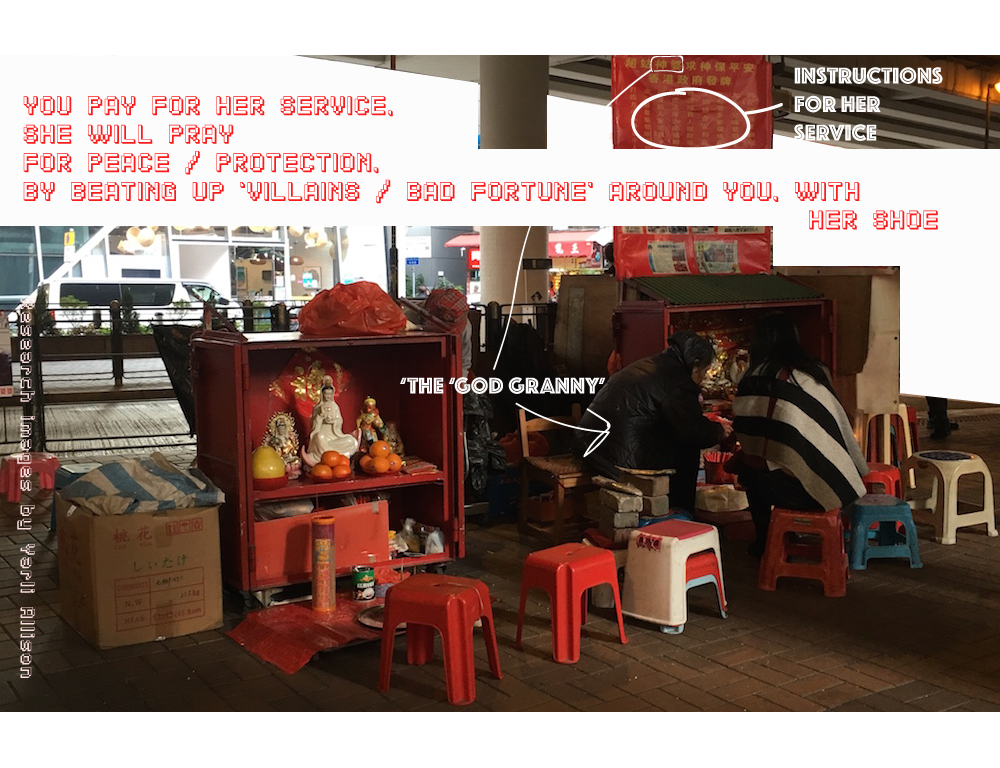
There are countless tools and meaning to objects which untrained-ordinary people like me can only rely on the fortune tellers, as they are the pro. My relative shared a common news article of a 'chart of fortune objects for the year' - in order to achieve various beneficial effects, specific objects shall be collected with suggested arrangements in space, according to its lucky cardinal directions. Each year's calculation of ' lucky spot' is different base on solar system changes, so we are required to rearrange the fortune objects at its up-to-date spot. Following this sense, certain languages, objects and material become meaningful if used 'properly'.
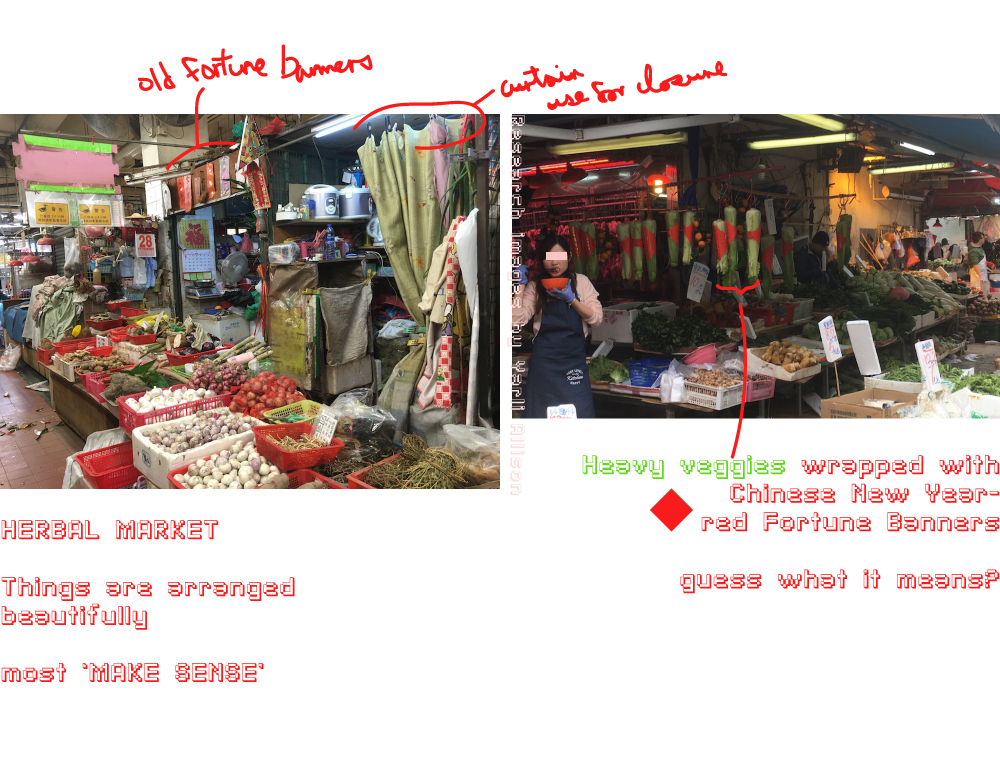
You can usually spot these meaningful objects easily as there is this unusual sense about them. One day, I came across a local restaurant with copper coins and keys soaked in rusty water facing entrance as Fung Seoi objects, as copper is believed to have healing properties and block bad fortune out of the door, so ANY cooper objects (keys, toys, door handles, pipe covers) could be thrown into this container of water to repel poor energy. In an artistic sense, I am interested in how these collected arrangements appear so chaotic with a logically make-sense system. Imagine the whole city built with randomly piled up but appealing objects those distant from outsiders. It is a method I'd like to dig its meaning behind it.
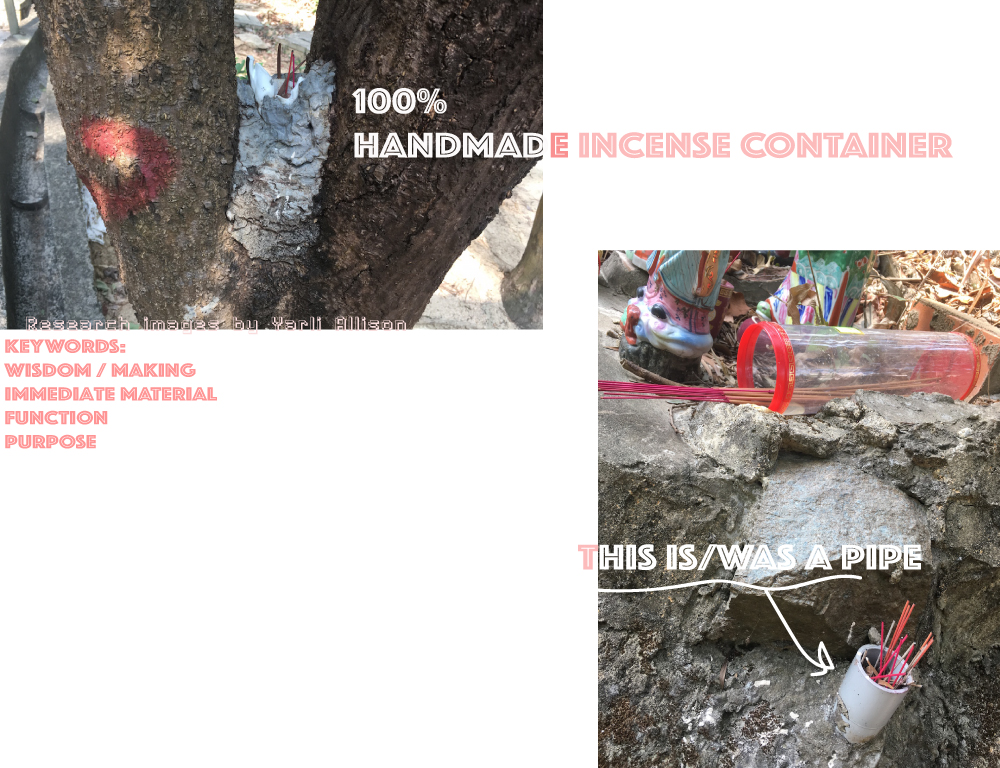
/ Before Chinese New Year, the locals burnt paper 'Hell Notes' for ancestors so that they could buy food, clothing, even smartphones and servants 'on the road' to next life or down the hell. /
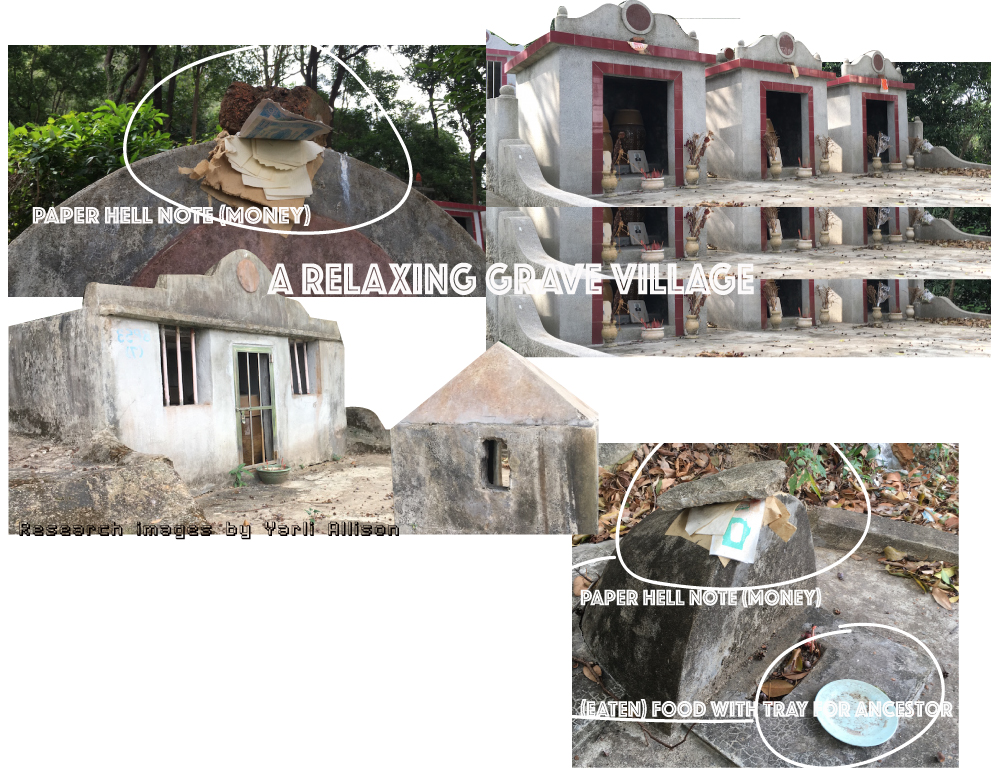
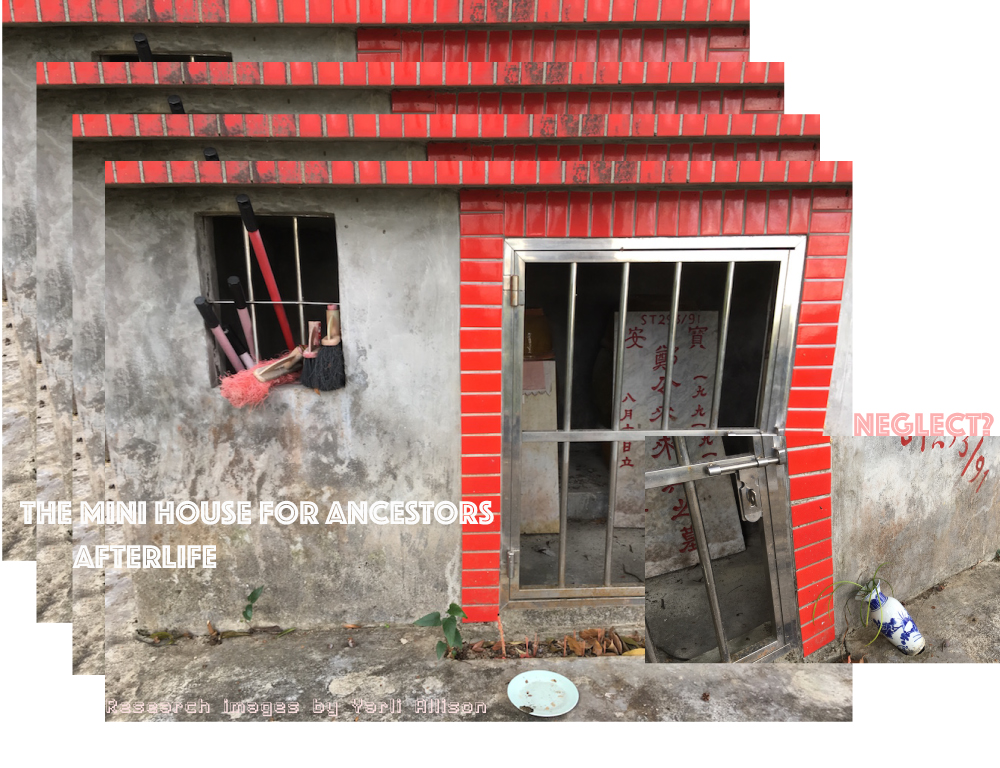
/ The color of crimson red and green not only traditionally presents HK's temple and New Year goodwill, it is also the most common color one can find in public objects (bins, hoses, painted houses). /
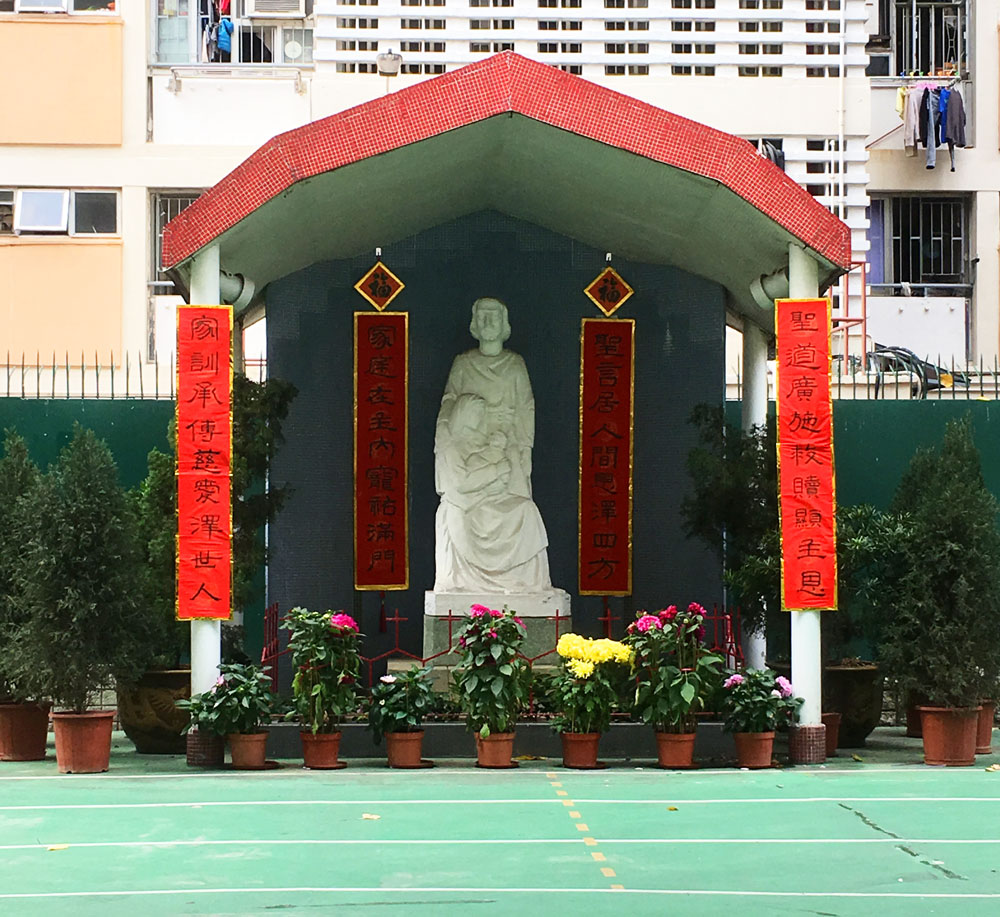
The chaotic yet systematic of making my fortune teller's office inspires mostly by a nearby early-90s wet market (牛池灣村), its self-sustained village is crowded with 'steel skin houses' (鐵皮屋).
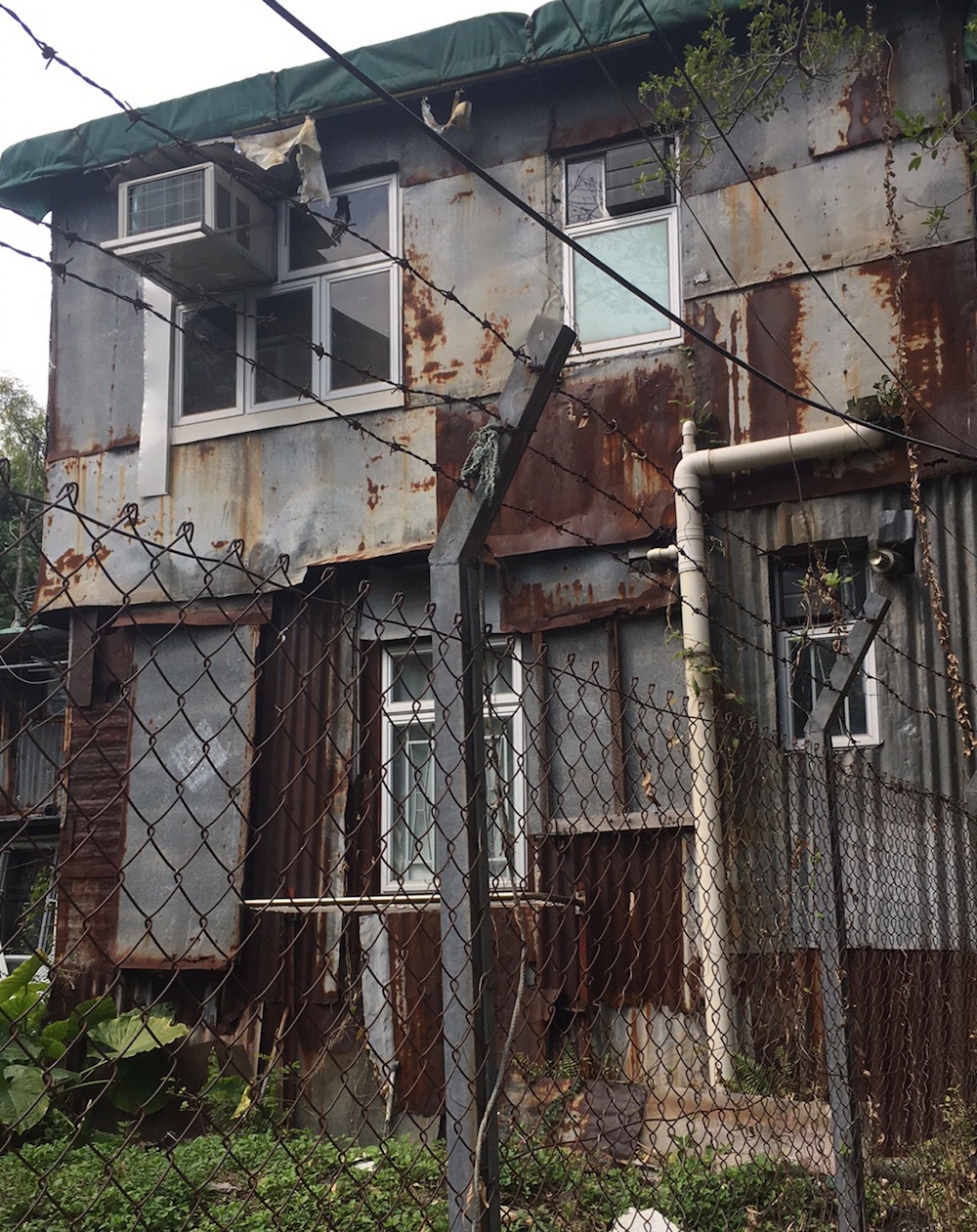
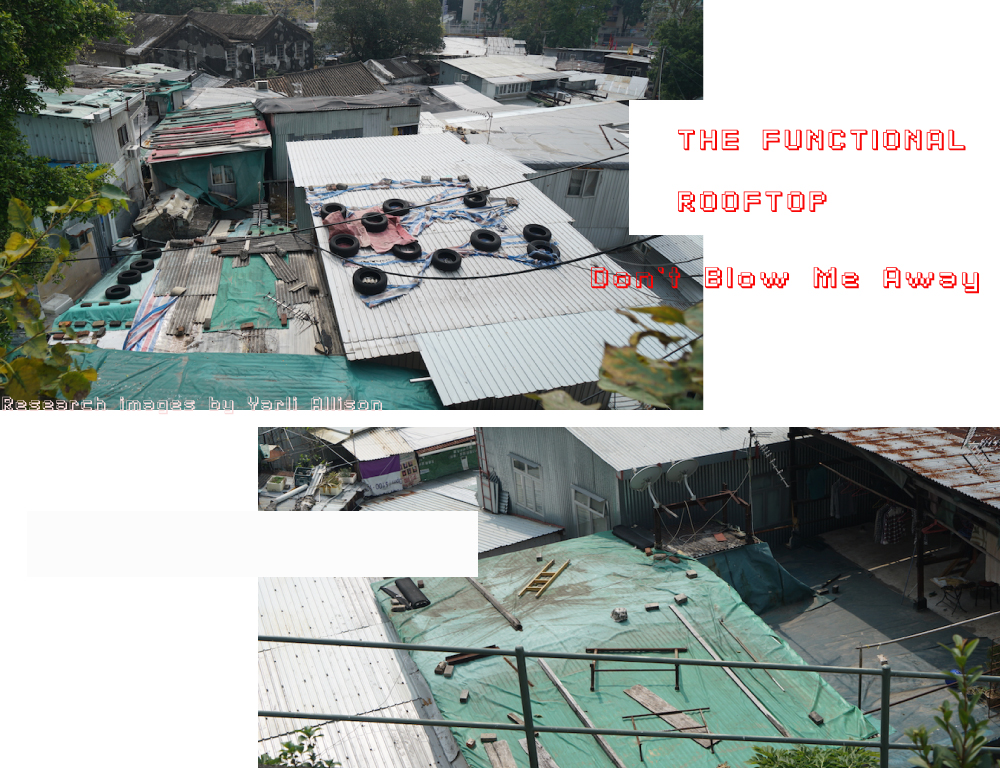
The whole village looks like it is going to fall apart. It was built with a sense of immediacy when you see unorganized screws attaching two pieces of rusty metal together, while many more metal sheets piled up to achieve a standing rectangular structure that leans against the next one. I wonder what chain-reaction would happen if a single structure falls.
Peak in from a window, or accurately, an organically shaped hole, the indoor flooring is patched with colorful advertisement plastic sheets; the roof is another piece of metal, with used tires and stones pressing it down. When they collaged a few pieces of randomly found wood with a drilled in handle, that's a door. Next to the door, there is handwritten address on metal mailbox hanging wobbly with a tightened fishing nod attached to some pipes. Each 'house' is accidentally personalized by its material usage and assembly method.
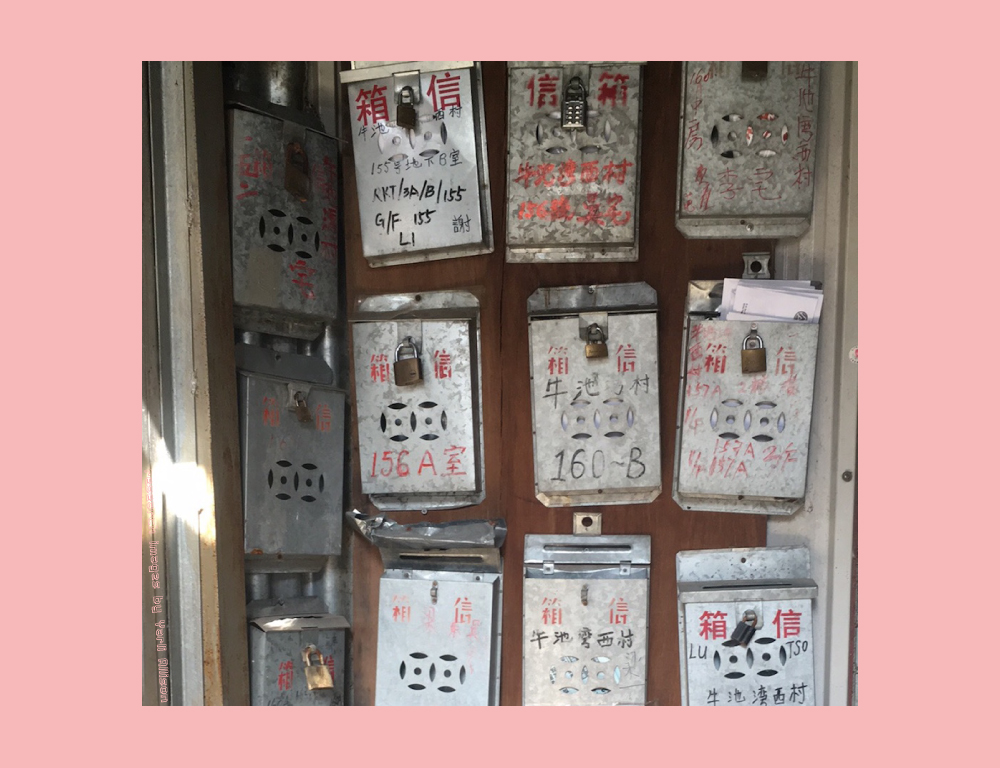
By using the most convenient materials they can find, they 'put together' with the quickest method they can trust, thus achieves an urgent and functional raw aesthetic. The crafting wisdom is unique to many Hong Kong's old villages those are being segregated by the city's tasteless fast-paced futuristic-want-to-be development.
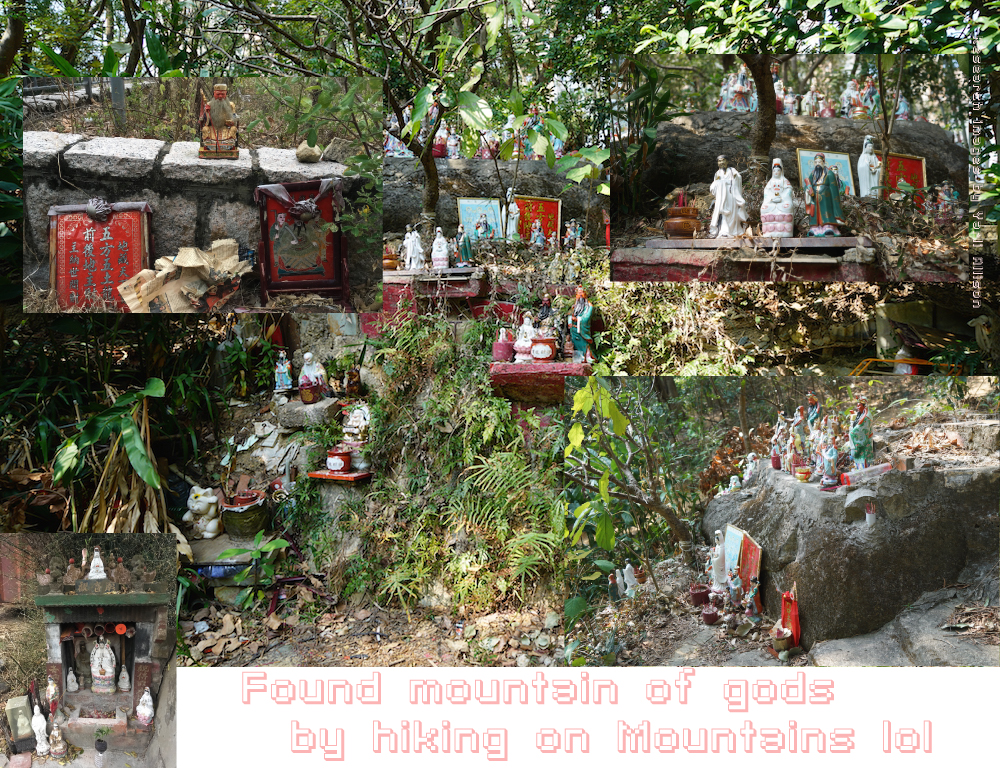
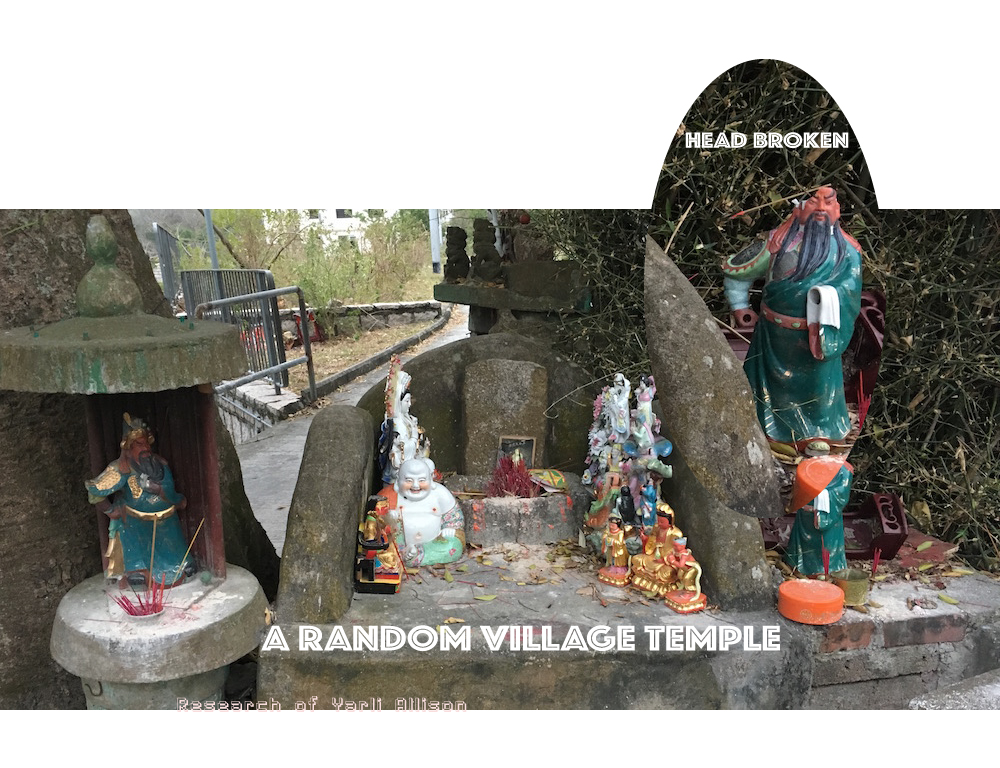
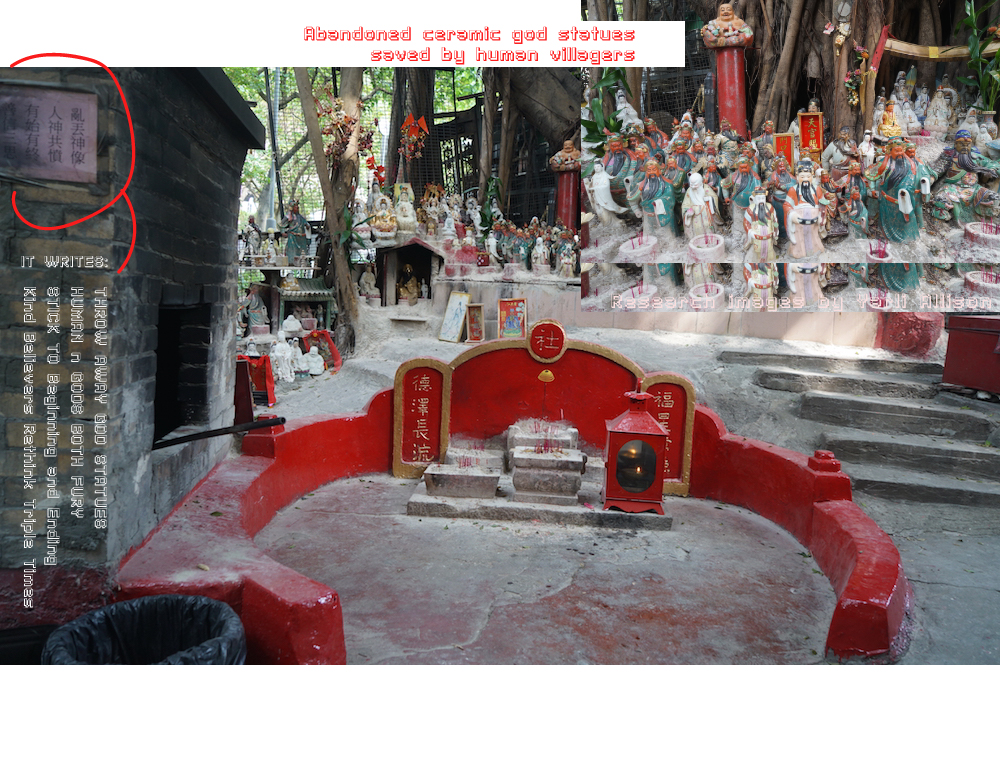
「亂丟神像 人神共憤」
At the entrance of the village (牛池灣村口), a huge collection of various Asian gods are strangely grouped together. The gods were abandoned, as a result, the collection of abandoned ceramic god statues serves as nowadays villager's temple that reminds me of the all-you-can-eat system. A poster says 'Throwing away god statues / People and the gods are angry".
As they are traditionally made with glazed ceramics, its harder for the gods to be composed. If the culture believes in reincarnation, maybe the gods can be mass produced and recycled with corn plastic in 3D printing? When lab-grown meat and bio-cells organs are able to be printed and modified digitally, how do these printing technologies provide alternative meanings to traditional objects?
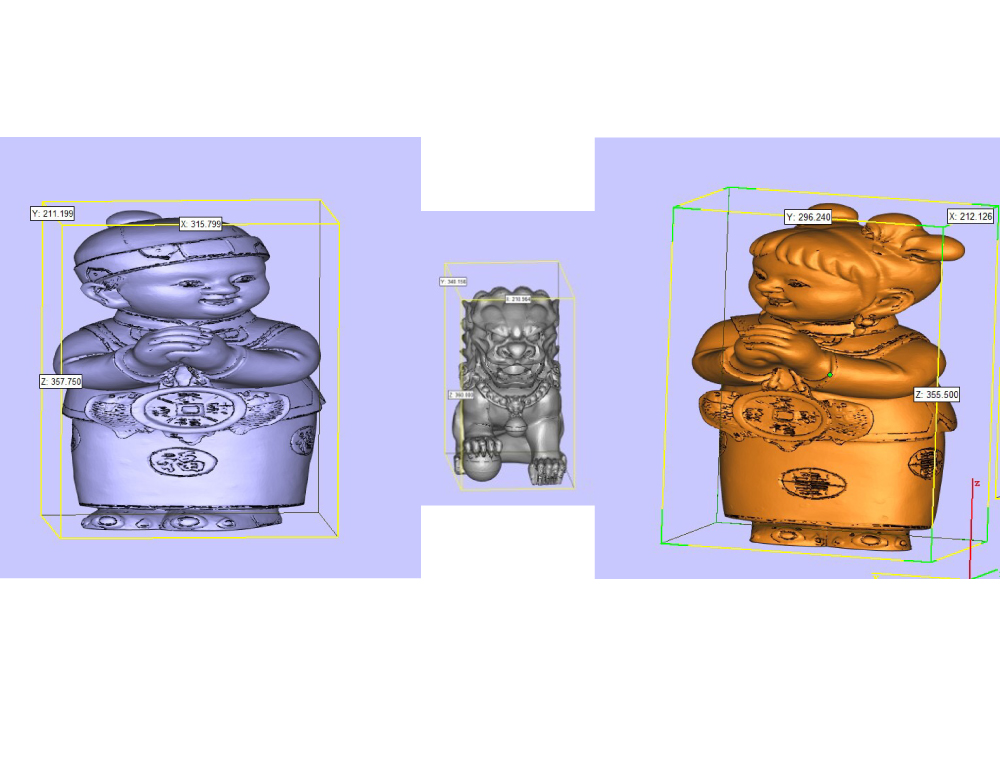
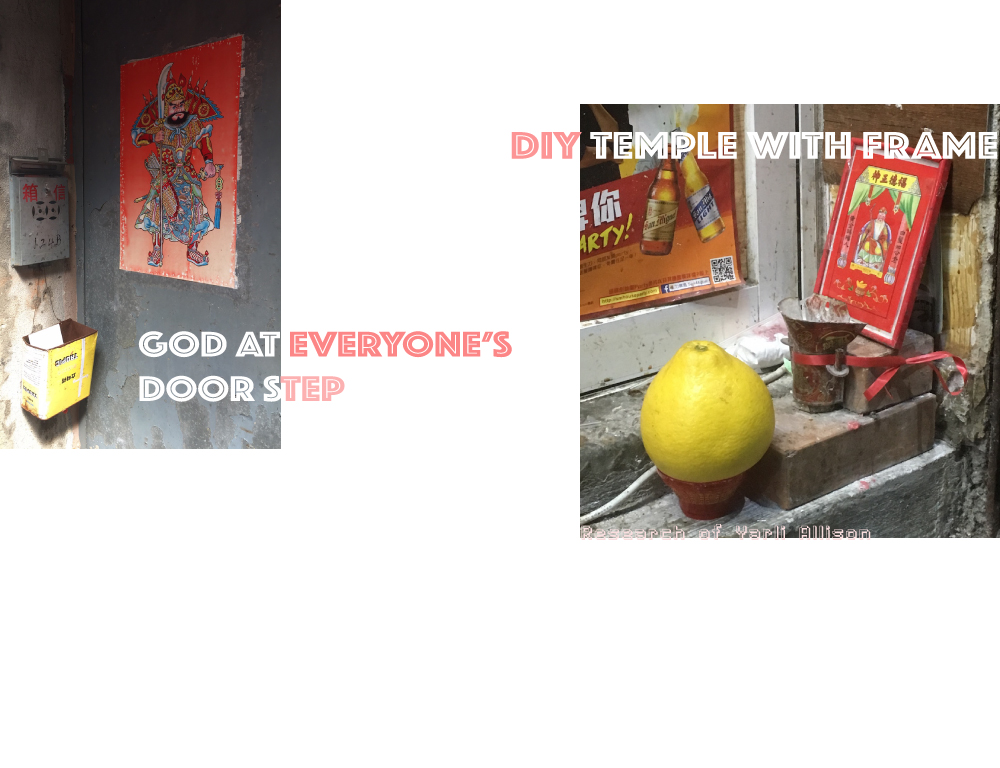
I tried to ask Fortune Teller...
I had an on-site fortune teller with an MA in Cultural studies background. I think her interactive existence is my invented system to tie things together as we question the uncertain future. Again it goes back to problem-solving anxiety and fear.
When the teller is absent, audiences are invited to help themselves to decode their received signs (numbers and images) at the 'Help Yourself Booth'. A local suicide prevention 'hopeline' is next to our Help Yourself Booth, the office is very near to the Fortune Teller's office, you know, just in case.
This Residency is Funded and Supported by
Artist-in-Residency Program, Academic of Visual Arts (AVA), Hong Kong Baptist University, Hong Kong with
Slade School of Fine Arts, University College London, UK
Lovely Credits:
AVA Faculty
Louis Nixon, Tom O'Dea, Bo Kent Law (Kevin), Tiff Hui 許天韻, ah C 詩
Wall Building Structure Team and Assistants
Hing Gor (Head of Wall Building Workshop), Lo Cheuk Yiu (Antonia) 盧卓瑶, Wu Ching Kwan 胡靖昀, Tam Bethia 譚思晴, Lam Mei Fan 林美芬, Wong Kwan Ho 黃君皓, Ngan Tsz Chung 顏子聰, Au Cheuk In 歐卓妍, Ma Yeuk Lam (Grace) 馬若琳
Installation Assistants
Cheung Winky 南哥, Ng Niki, Chiu Kenny 趙汝勤, Yueng Oi-Man 楊愛文
Lo Yu as Fortune Teller Performer May May
Family and Friends as material contributor
my mom's collection, Hinz Pak's red light covers, Julia Gabilondo's goodwill, Cristiana Forte's dry starfish, Sun Man Chi 孫敏之's collection and caligraphies
Photography
MacFlow Tsang and Yarli Allison